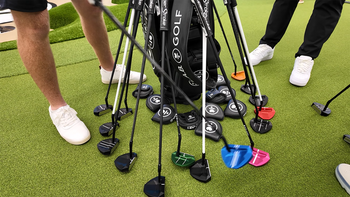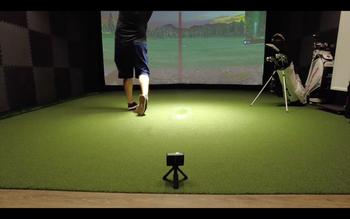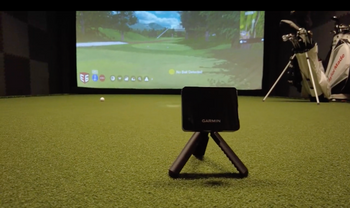In the world of golf, the putter is often referred to as the most important club in the bag. It's the club that can make or break a round, turning a good score into a great one or vice versa. While much attention is given to putter heads and shaft designs, the grip of the putter is an often overlooked yet crucial component that can significantly impact a golfer's performance on the greens. Choosing the right putter grip can enhance your control, improve your consistency, and ultimately lower your scores.
This comprehensive guide will delve into the intricacies of putter grips, exploring why they matter, the various types available, and how to select the best one for your game. We'll also review some of the top putter grips, providing you with the knowledge you need to make an informed decision that could revolutionize your putting.
Table of Contents
Why Putter Grips Matter

- Connection Between Player and Club: The putter grip serves as the sole point of contact between the golfer and the club. This intimate connection is crucial as it directly influences the feel, control, and overall execution of the putting stroke. A well-chosen grip can enhance the golfer's ability to sense the clubhead's position throughout the stroke, leading to better distance control and accuracy.
- Impact on Putting Stroke: Different grip designs can significantly influence wrist movement, hand placement, and the overall consistency of your putting stroke. For instance, oversized grips can help reduce wrist action, promoting a more pendulum-like motion that many golfers find beneficial for consistency. Conversely, slimmer grips may allow for more feel and finesse, which some players prefer for delicate touch around the greens.
- Psychological Confidence: Never underestimate the power of confidence in golf, especially when it comes to putting. A comfortable grip that feels right in your hands can provide a significant psychological boost. This increased confidence can lead to more committed strokes and better overall performance on the greens. Many professional golfers attribute improved putting performance to finding a grip that instills confidence in their abilities.
Types of Putter Grips
Understanding the different types of putter grips available is crucial in making an informed decision. Here are the main categories:
- Pistol Grips: Pistol grips feature a tapered design with a thicker top section that gradually narrows towards the bottom. This design promotes a firm hold with the top hand while allowing for a lighter touch with the bottom hand. The Golf Pride Pro Only Red Star is an excellent example of a pistol grip, offering a classic feel with modern performance enhancements.
- Straight Grips: Straight grips maintain a uniform thickness throughout their length. This design encourages even pressure from both hands, which can help promote a smoother, more consistent stroke. The SuperStroke Zenergy is a popular straight grip that has gained traction among both amateur and professional golfers for its ability to quiet the hands during the stroke.
- Oversized Grips: Oversized grips have a larger diameter compared to traditional grips. They are designed to reduce wrist movement and encourage a pendulum-like motion in the putting stroke. The WinnPro X is a prime example of an oversized grip that has revolutionized putting for many golfers by promoting a more stable and consistent stroke.
Key Factors to Consider When Choosing a Putter Grip
- Size: The size of your putter grip can have a significant impact on your putting stroke. Standard grips are typically around 1 inch in diameter, while oversized grips can range from 1.2 to 1.75 inches or even larger. Oversized grips have gained popularity in recent years due to their ability to reduce wrist action during a stroke. By filling more of the palms, these larger grips can help create a more stable putting motion, potentially leading to improved consistency. However, it's important to note that grip size is a personal preference, and what works for one golfer may not work for another.
- Material: The material of your putter grip plays a crucial role in both comfort and performance. Common materials include: Rubber, Polyurethane, and Polymer compounds.
- Shape: The shape of your putter grip can affect hand placement and stroke mechanics. Round grips are traditional and versatile, while flat-front grips can help with consistent hand placement. Some grips, like the Golf Pride Pro Only series, offer multiple shapes within their line to cater to different preferences.
- Weight: The weight of your putter grip can subtly influence the balance and feel of your putter. Lighter grips may allow for more feel in the hands, while heavier grips can add stability to the stroke. It's important to consider how the grip weight interacts with the overall balance of your putter.
- Texture: The texture of your grip affects both the security of your hold and the feedback you receive during the stroke. Some grips feature dimpled or patterned surfaces for enhanced traction, while others may have a smoother feel. The ideal texture often comes down to personal preference and the conditions in which you typically play.
SuperStroke Zenergy Pistol Grip
The SuperStroke Zenergy Pistol Grip represents the latest innovation in putter grip technology from SuperStroke, a company known for revolutionizing the putter grip market. This grip combines the traditional pistol-style top section with SuperStroke's signature "No Taper Technology" to create a unique and effective putting aid.
The Zenergy Pistol Grip features a pistol-style top section that helps golfers lock in their upper hand position, promoting a consistent grip and setup. This design element is particularly beneficial for golfers who prefer a more traditional feel in their top hand while still benefiting from modern grip technology.
SuperStroke's patented "No Taper Technology" is incorporated into the lower section of the grip. This design maintains a consistent width throughout the bottom portion, which helps golfers maintain even pressure in both hands during the stroke. This can lead to a more stable and repeatable putting motion.
The grip is constructed with a tacky outer layer made of polyurethane, providing excellent grip security in various weather conditions. Beneath this outer layer is a firm rubber inner core that adds stability to the overall grip structure. This combination of materials aims to deliver both comfort and performance.
A key feature of the Zenergy Pistol Grip is the enhanced Spyne Technology. This is an embossed ridge along the underside of the grip, designed to make it easier for golfers to square the putter face at impact. This can be particularly helpful for golfers who struggle with consistency in their putting stroke.
The grip also incorporates multi-zone texturing, strategically placed in high-sensory areas. This texturing is designed to optimize feedback and comfort, allowing golfers to better feel the putter head throughout the stroke.
At the top of the grip is SuperStroke's Tech-Port, which allows golfers to add counterweights or performance tracking sensors, providing options for further customization and game improvement.
SuperStroke Zenergy Pistol Grip
Experience the SuperStroke Zenergy Pistol Grip-featuring enhanced Spyne™ Technology, multi-zone texturing, and no-taper design for superior putting control.
Golf Pride Reverse Taper Putter Grip
Golf Pride, a leading manufacturer of golf grips, has introduced an innovative new putter grip design called the Reverse Taper. This grip represents a significant departure from traditional putter grip designs and aims to improve putting performance for golfers of all skill levels.
The Reverse Taper grip features a unique construction where the upper portion of the grip is slimmer than the lower portion, which is the opposite of traditional putter grips. This design is based on extensive research and testing conducted by Golf Pride, including analysis of over 21,000 variables across 364 putts using advanced putting lab technology.
The key principle behind the Reverse Taper design is to stabilize both hands during the putting stroke, resulting in a squarer putter face at impact. Golf Pride's research indicated that many golfers struggle with an overactive lower hand during putting, which can lead to inconsistent strokes. The Reverse Taper technology aims to mitigate this issue by providing a more stable grip for the upper hand while allowing the lower hand to remain relaxed.
Available in three distinct shapes (Round, Pistol, and Flat) and two sizes (Medium and Large), the Reverse Taper grips are designed to accommodate various putting styles and preferences. The grips are made from a specially developed synthetic material that enhances feel, comfort, and control.
Golf Pride's testing showed that the Reverse Taper technology delivered a 15% squarer putter face at impact compared to a standard parallel putter grip. This improvement in face angle consistency could potentially lead to more accurate putting and lower scores for golfers.
The Reverse Taper grips mark Golf Pride's renewed focus on the putter grip market. With this innovative design, Golf Pride aims to challenge the dominance of other putter grip manufacturers and provide golfers with a new option for improving their performance on the greens.
Golf Pride Reverse Taper Putter Grip
The Golf Pride Reverse Taper Putter Grip features a slim upper hand and wider lower hand, delivering enhanced control, stability, and a soft, tacky feel.
SuperStroke Traxion Tour 2.0 Putter Grip
The SuperStroke Traxion Tour 2.0 Putter Grip is a popular choice among golfers seeking to improve their putting performance. This grip is part of SuperStroke's Traxion Tour series, which has gained significant traction in both amateur and professional golf circles.
The Traxion Tour 2.0 features a mid-sized design, offering a balance between feel and stability. It has a diameter of 1.20 inches, making it larger than traditional putter grips but not as oversized as some other SuperStroke models. This size is designed to reduce wrist movement during the putting stroke, promoting a more pendulum-like motion.
One of the key technologies in this grip is the Traxion Control, which refers to the surface texture designed to enhance feedback and tackiness. The grip's outer layer is made of a soft polyurethane material that provides a comfortable feel while maintaining grip security in various weather conditions.
The grip also incorporates Spyne Technology, which features a ridge along the underside of the grip. This design element aids in consistent hand placement, helping golfers replicate their grip position from putt to putt. This can be particularly beneficial for players who struggle with maintaining a consistent putting stroke.
Another notable feature is the No Taper Technology. Unlike traditional grips that taper towards the bottom, the Traxion Tour 2.0 maintains a uniform size throughout its length. This design encourages even pressure in both hands, which can help in achieving a smoother putting stroke.
The Traxion Tour 2.0 is available in various colors, allowing golfers to customize their putter's appearance. It's also compatible with SuperStroke's CounterCore technology, which allows players to add weight to the grip end of the putter, potentially altering the putter's balance point for improved performance.
Many professional golfers have adopted SuperStroke grips, including the Traxion Tour series, which has contributed to the brand's popularity and credibility. The grip's performance benefits, coupled with its adoption by tour professionals, have made it a go-to choice for golfers looking to enhance their putting game.
SuperStroke Traxion Tour 2.0 Putter Grip
Elevate your putting with the SuperStroke Traxion Tour 2.0 Putter Grip-featuring advanced Traxion texture, Spyne tech, and no-taper design for control.
Golf Pride Pro Only Putter Grip
The Golf Pride Pro Only Putter Grip is a line of putter grips that represents a return to more traditional sizing and shapes in the putter grip market. Launched in 2019, this series was designed to cater to golfers who prefer smaller, more classic grip profiles over the oversized options that have dominated recent trends.
The Pro Only line revives a legendary name from Golf Pride's history, paying homage to their iconic "putter-man" grips of the past while incorporating modern materials and design elements. This series was developed in response to the fact that many top professional golfers still prefer traditional-sized putter grips, despite the popularity of oversized options.
The Pro Only series features three distinct models: Red Star, Blue Star, and Green Star. Each model offers a unique shape and size to accommodate different hand sizes and gripping preferences. The Red Star is the smallest at 72cc, featuring a classic pistol shape. The Blue Star, at 81cc, has a wider paddle front and angled back. The Green Star, the largest at 88cc, offers a rounded, oval back shape for comfort.
All three models are constructed with a proprietary rubber compound that provides a firm yet tacky feel. This material is designed to enhance feedback and control, allowing golfers to maintain a light grip pressure while still feeling connected to the putter.
The grips are engineered to offer precise hand placement and consistent feel, which can contribute to improved putting performance. They feature clean aesthetics with subtle branding, appealing to golfers who prefer a classic look.
By introducing the Pro Only series, Golf Pride aimed to fill a gap in their product lineup and provide options for golfers seeking high-quality, traditionally-sized putter grips. This move also demonstrates the cyclical nature of golf equipment trends, as the industry sees a renewed interest in more classic designs alongside continued innovation.
Golf Pride Pro Only Putter Grip
Elevate your putting with the Golf Pride Pro Only Putter Grip-crafted with a firmer rubber compound for ultimate feedback, precision, and Tour-inspired control.
Lamkin Sink Fit Straight Putter Grip
The Lamkin Sink Fit Straight Putter Grip is a popular choice among golfers looking for a midsize grip that offers both performance and comfort. Introduced as part of Lamkin's Sink Fit series, this grip is designed to cater to players with a straight-back-straight-through putting stroke.
The grip features Lamkin's proprietary Fingerprint Technology, which creates a consistent micro-texture pattern across the surface. This technology provides excellent grip comfort while maintaining a lighter surface traction, allowing for a secure hold without excessive pressure. The grip's shape is parallel, with a subtle ridge along the underside to guide proper hand placement.
Made from a lightweight polyurethane material, the Sink Fit Straight grip offers a balance between softness and durability. It's particularly well-suited for golfers who use various putting grip styles, including claw-style, palm-to-palm, fingers down the shaft, or split hand techniques.
One of the key benefits of this grip is its ability to encourage a smoother, pendulum-style stroke. The consistent diameter throughout the grip helps promote even pressure from both hands, which can lead to improved putting consistency.
The grip comes in a distinctive red and black color scheme, making it easily identifiable. It's also available in multiple sizes to accommodate different hand sizes and preferences.
Golfers appreciate the Sink Fit Straight for its tacky feel, which provides excellent feedback and control. The grip's design also helps in reducing wrist action during the putting stroke, a feature that many players find beneficial for improving their accuracy on the greens.
Overall, the Lamkin Sink Fit Straight Putter Grip represents a modern approach to putter grip design, combining innovative materials and technologies to enhance the putting experience for a wide range of golfers.
Lamkin Sink Fit Straight Putter Grip
Experience unmatched putting control with the Lamkin Sink Fit Straight Putter Grip-engineered for a responsive feel, optimal tack, and lasting durability.
Flat Cat Putter Grip
The Flat Cat Putter Grip is an innovative golf accessory designed to improve putting performance by addressing common issues faced by golfers on the green. Developed with a unique flat-sided design, this grip aims to help players maintain a square putter face throughout their stroke, leading to more accurate and consistent putting.
The grip's most distinctive feature is its FLAT1 shape, which features parallel flat sides that align with the putter face. This design puts the feeling of "square" directly into the golfer's hands, making it easier to keep the putter face aligned with the target line at address and through impact. The flat surfaces also provide a consistent reference point for hand placement, potentially improving stroke repeatability.
Flat Cat grips are available in various sizes to accommodate different hand sizes and preferences, ranging from slim models for those who prefer a more traditional feel to oversized options for golfers seeking to minimize wrist action. The grips are typically made from lightweight polyurethane compounds that offer comfort and tackiness, even in humid or wet conditions.
One of the key benefits touted by Flat Cat is the grip's ability to help golfers who struggle with the "yips" or excessive wrist movement during putting. By promoting a more stable hand position and limiting wrist breakdown, the grip aims to foster a pendulum-like stroke that many golf instructors advocate.
The Flat Cat grip has gained attention in the golfing world, with some professional players, including Major winner Justin Rose, using it in competition. While it represents a departure from traditional round grips, many golfers report improved putting performance after switching to the Flat Cat design.
As with any golf equipment, individual results may vary, and some adaptation time may be necessary when transitioning to this unique grip style. However, for golfers struggling with putting consistency or looking for an edge on the greens, the Flat Cat Putter Grip offers an intriguing option worth considering.
Flat Cat Putter Grip
Experience superior putting precision with the Flat Cat Putter Grip, featuring a unique flat-sided design for unmatched alignment, comfort, and control.
Ping Golf PP58 Putter Grip
The Ping PP58 is an iconic putter grip that has been a staple in the golf industry for decades. Developed by Ping's founder Karsten Solheim, the PP58 was designed to replicate the feel and performance of Ping's innovative Ballnamic shaft, which was later deemed non-conforming by golf's governing bodies.
The PP58 features a distinctive pistol-style shape with a larger end that helps "lock in" the player's grip, promoting a more consistent and repeatable putting stroke. This design philosophy aligns with Solheim's goal of reducing twisting at impact and improving overall putting performance.
Made from high-quality rubber, the PP58 offers excellent tackiness and durability. It's available in various sizes, including standard and midsize options, to accommodate different hand sizes and preferences. The grip's texture and material composition provide a secure hold in various weather conditions, enhancing control and feel during the putting stroke.
One of the PP58's most notable features is its cord version, which incorporates a corded pattern for additional traction. This variant is particularly popular among golfers who play in humid or wet conditions, as it helps maintain a secure grip even when moisture is present.
The PP58 has been used by numerous professional golfers over the years, including Tiger Woods, who famously used this grip during many of his major championship victories. Its enduring popularity is a testament to its effectiveness and the trust golfers place in its design.
Ping continues to offer the PP58 as part of their grip lineup, and it remains a popular choice for both new Ping putters and as a replacement grip for other putter brands. Its timeless design and proven performance have made it a go-to option for golfers of all skill levels seeking consistency and feel on the greens.
Ping Golf PP58 Putter Grip
The Ping Golf PP58 Putter Grip features a classic, tour-proven design with a textured, slip-resistant feel, ensuring stability and accuracy for every putt.
SuperStroke Traxion WristLock Golf Putter Grip
The SuperStroke Traxion WristLock Golf Putter Grip is an innovative putter grip designed to help golfers improve their putting consistency and accuracy. Introduced in 2020, it represents SuperStroke's response to the USGA's anchoring ban and the subsequent search for legal alternatives to stabilize the putting stroke.
The WristLock grip features a unique design with an extended upper section that protrudes at an angle. This allows the grip to rest against the inside of the lead wrist during the putting stroke, effectively "locking" the wrist in place. The goal is to minimize unwanted wrist movement and promote a more pendulum-like putting motion.
At 13.75 inches long, the WristLock grip is about 3 inches longer than standard putter grips. This extra length accommodates the angled upper section and allows for various hand positions. The grip maintains SuperStroke's signature "No Taper Technology," ensuring even grip pressure throughout the hands for a more consistent stroke.
The Traxion surface texture, a hallmark of SuperStroke's recent grip designs, provides enhanced feedback and a tacky feel in various weather conditions. The grip also features SuperStroke's "Tech-Port," allowing golfers to add counterweights for further customization.
While USGA-approved, the WristLock grip may require some adjustment to a golfer's existing putter setup. Some players find they need to add length or loft to their putter to accommodate the grip's forward press position.
The WristLock has gained popularity among golfers struggling with consistency or the yips, offering a legal alternative to anchored putting styles. It represents SuperStroke's commitment to innovation in the putter grip market, where they have been a dominant force for over a decade.
SuperStroke Traxion WristLock Golf Putter Grip
The SuperStroke Traxion WristLock Golf Putter Grip features patented No Taper Technology and Traxion Control, locking your wrist for unmatched putting consistency.
How to Choose the Right Grip Based on Your Putting Style
- For Players with Wrist Movement Issues: If you struggle with excessive wrist movement during your putting stroke, oversized or straight grips can be beneficial. The WinnPro X, for example, is designed to minimize wrist action, promoting a more stable and consistent stroke. These larger grips fill the palms more, naturally reducing the tendency for the wrists to break down during the stroke.
- For Players Seeking More Feel: Golfers who rely on feel and prefer to manipulate the putter face might benefit from slimmer, pistol-style grips. The Golf Pride Pro Only Red Star, for instance, offers a traditional shape that allows for greater sensory feedback. These grips can enhance your ability to make subtle adjustments, which can be particularly useful on fast greens or for tricky breaking putts.
- For Players Who Want Stability: If stability is your primary concern, straight or reverse-taper designs that promote even hand pressure could be the answer. The SuperStroke Zenergy, with its uniform diameter, encourages a grip that distributes pressure evenly between both hands. This can lead to a more stable stroke, particularly beneficial for longer putts where maintaining a consistent path is crucial.
Expert Tips for Installing Your New Putter Grip
Installing a new putter grip can be a straightforward process if you follow these steps:
- Remove the old grip using a utility knife. Be careful not to damage the shaft.
- Clean the shaft thoroughly, removing all tape and residue.
- Apply double-sided grip tape to the shaft.
- Pour grip solvent over the tape and inside the new grip.
- Slide the grip onto the shaft, ensuring it's straight and properly aligned.
- Allow the grip to dry for at least 6 hours before use.
- Proper alignment is crucial during installation. Many grips have alignment aids that should be positioned correctly in relation to the putter face. Misalignment can lead to inconsistent putting, so take your time to ensure everything is perfectly straight.
Frequently Asked Questions
How often should I replace my putter grip?
The frequency of putter grip replacement depends on several factors, including usage, storage conditions, and personal preference. As a general rule, it's recommended to replace your putter grip every 12-18 months for regular players. However, if you notice signs of wear such as smoothness, hardening, or visible cracks, it's time for a replacement regardless of timeframe. Some golfers prefer to change their grips more frequently to maintain optimal tackiness and feel.
Can changing my putter grip affect the swing weight of my putter?
Yes, changing your putter grip can indeed affect the swing weight of your putter. Heavier grips will decrease the swing weight, potentially making the putter feel more head-light, while lighter grips will increase the swing weight, making the putter feel more head-heavy. This change can impact the feel and balance of your putter, potentially affecting your stroke. It's important to consider this when selecting a new grip, especially if you're switching to a significantly different weight or size.
Are oversized putter grips legal for tournament play?
Yes, oversized putter grips are legal for tournament play according to the Rules of Golf set by the USGA and R&A. However, there are some restrictions on grip dimensions. The grip must be circular in cross-section, straight from top to bottom, and not exceed 1.75 inches (44.45 mm) in diameter at any point. As long as the grip meets these criteria, it is permissible for use in tournaments.
Can I use a regular golf club grip on my putter?
While it's technically possible to use a regular golf club grip on a putter, it's generally not recommended. Putter grips are specifically designed to enhance feel, promote a pendulum-like stroke, and reduce wrist action - features that regular grips may not provide. Additionally, many putter grips are designed with a flat front to aid in proper hand placement, which is crucial for consistent putting. Using a regular grip may negatively impact your putting performance and consistency.
How do I know which putter grip size is right for me?
Determining the right putter grip size involves personal preference and can depend on factors such as hand size, putting style, and comfort. Here are some general guidelines:
If you have small hands or prefer more wrist action, a standard or slightly undersized grip might be suitable.
For average-sized hands, a midsize grip could be a good starting point.
If you have large hands or want to minimize wrist movement, an oversized grip might be beneficial.
The best way to determine the right size is to try different options. Many golf shops have grip-testing stations where you can experiment with various sizes and styles. Pay attention to how each grip affects your stroke and choose the one that feels most comfortable and promotes your best putting performance.
Conclusion
Choosing the right putter grip is a highly personal decision that can have a significant impact on your putting performance. By understanding the different types of grips available, considering key factors like size, material, and shape, and matching the grip to your putting style, you can find a grip that enhances your control, consistency, and confidence on the greens.
Remember, what works for one golfer may not work for another. Don't be afraid to experiment with different options to find the grip that feels best in your hands and complements your putting stroke. Whether you opt for an oversized grip like the WinnPro X, a straight grip like the SuperStroke Zenergy, or a more traditional option like those in the Golf Pride Pro Only Series, the right grip can be a game-changer for your putting.
Ultimately, the best putter grip is the one that allows you to make a smooth, consistent stroke with confidence. Take the time to explore your options, and you may find that a simple grip change is all it takes to shave strokes off your score and enjoy more success on the greens.





















